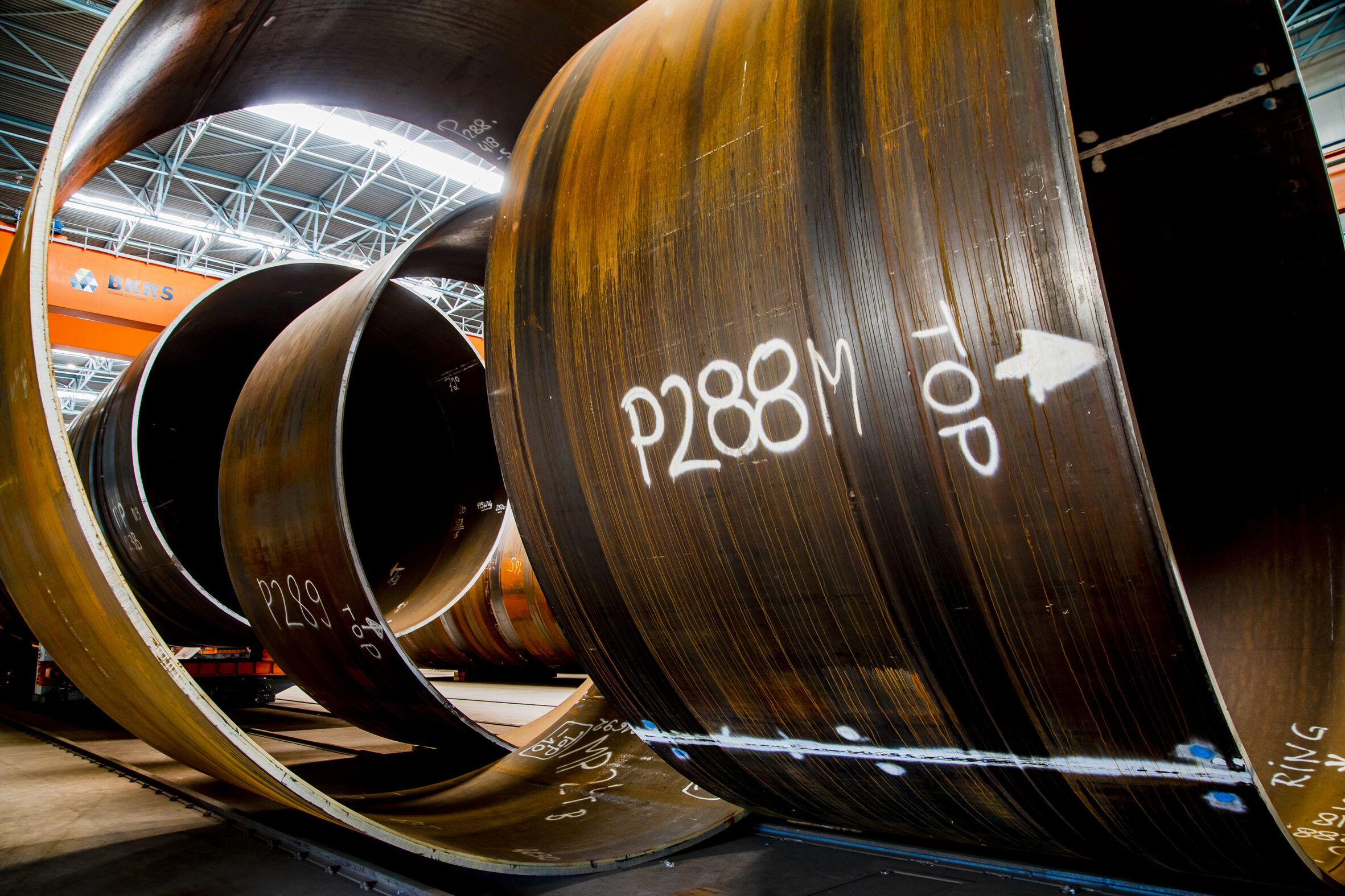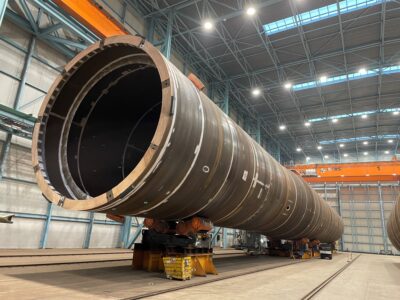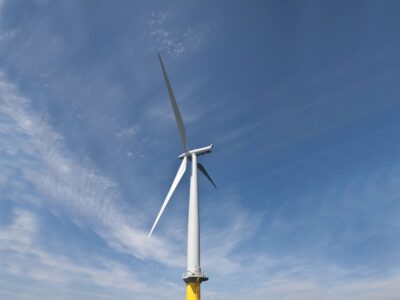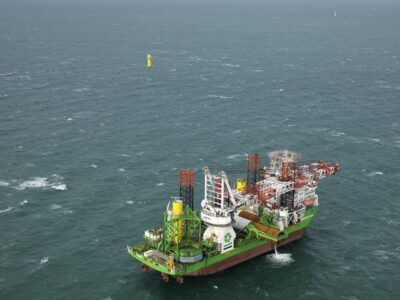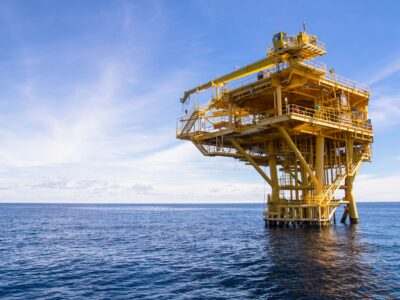Products & services
Sif manufactures foundations and foundation components. There are several different types of foundations for offshore projects. Which type is used depends on a number of factors including water depth and the composition of the seabed. The monopile is the most commonly used foundation since it offers the best value for money in offshore wind. Offshore oil & gas projects mostly use jacket foundations of floating devices. Sif also manufactures components for jacket foundations.
Key data Sif production site
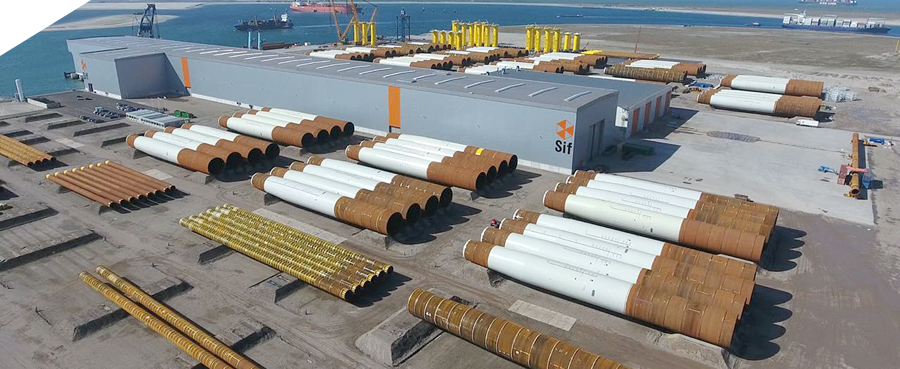

4-5
monopiles per week
10
tons/m2
300,000
tons
62
hectares
600 15.6
meters length
meter draught
Ro-ro quay
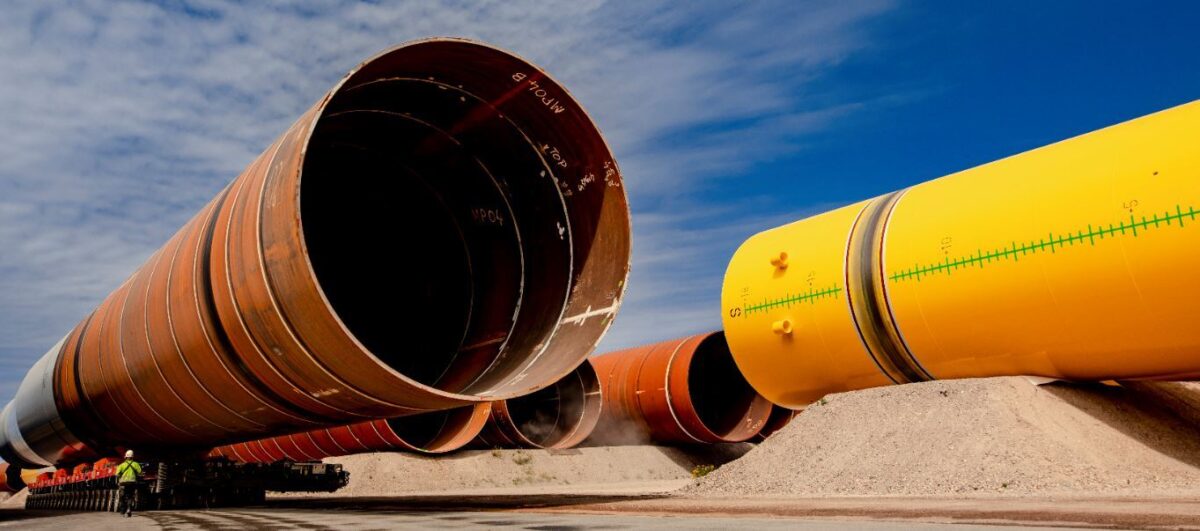
Monopiles
There are several different types of foundations for offshore wind energy projects. The type that is used depends on a number of factors, including water depth and the soil composition of the seabed. Monopiles are the most commonly used foundations for offshore wind turbines since they offer the best value for money. They can be used in water depths of up to 50 to 60 metres. However, monopiles are not yet the preferred choice for very rocky soil conditions. In such situations, jackets or gravity-based foundations are good alternatives. Suction buckets and floating foundations are being used on an experimental basis.
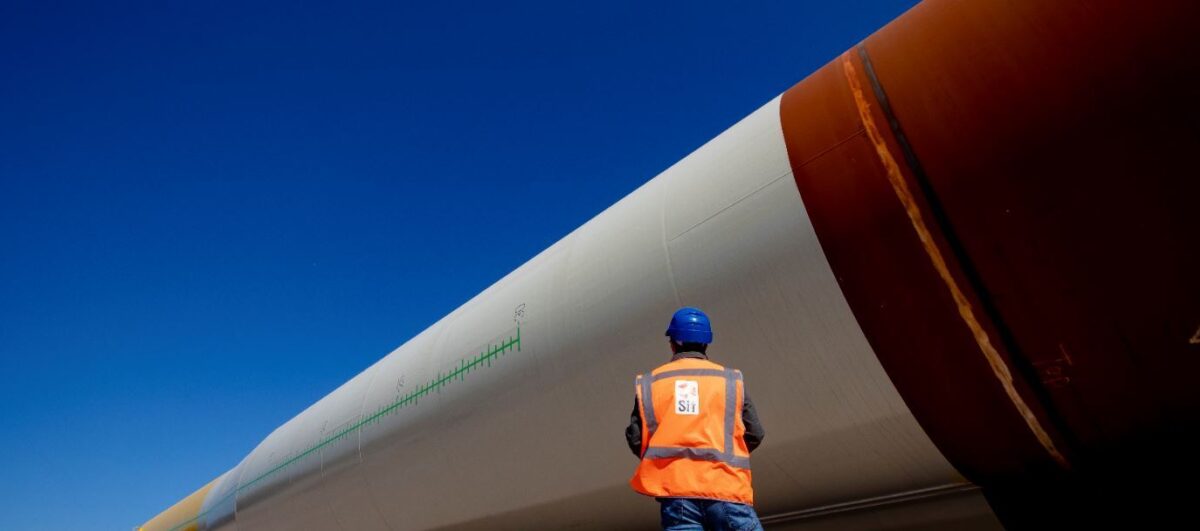
Offshore steel structures
Sif is a company with a long-standing history in the fabrication of steel tubulars for offshore oil and gas platforms. The Offshore Steel Structures we produce are jacket components such as legs, piles and pile sleeves, which are available in any quantity, length and wall thickness and in diameters up to approximately 3.5 metres. These tubulars are increasingly used in other markets, including in jackets for substations in offshore windfarms and new offshore applications, such as deep-sea foundation piles and heavy-duty piles used in portal areas.
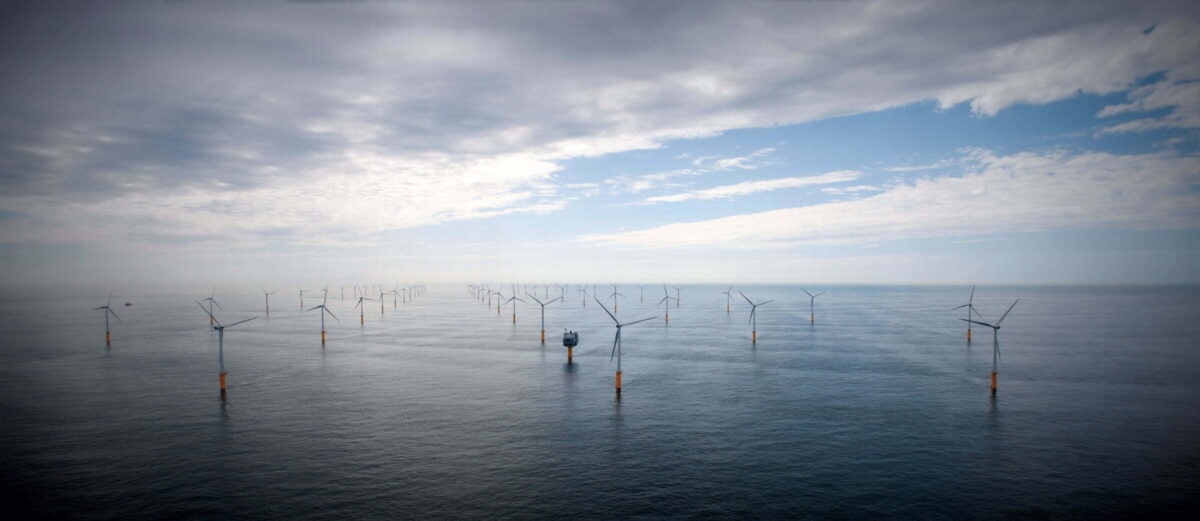
Design engineering
We have seen significant innovations in recent years. Technologies such as slip-joint connections and narrow-gap welding can contribute to making offshore wind energy more sustainable and have the potential to make the industry more efficient, more affordable and safer. We have seen the wind energy industry taking a step forward in design standards and regulations by developing its own offshore wind energy regulations by means of the ratification of PISA. PISA defines new design methods for large-diameter monopiles which has an impact on the production of monopiles.

Coating facilities
We have learned that requirements for preserving monopiles are becoming substantially more stringent. Higher-quality, more complex coating systems and larger surfaces that have to be coated both inside and outside have become the standard.
Sif built two additional coating halls in 2019 to meet the increased demands for coating-quality and extended surface area of the protection of monopiles when installed at sea. We now have 6 coating halls at our Maasvlakte 2 facility.

Marshalling & Logistic Services
At our Maasvlakte site in Europort Rotterdam, we operate a 62 hectare site that enables us to provide marshalling and logistics services to our clients. Thanks to the excellent facilities in terms of the deep-water quay and easy accessibility and because installation ships require our services in any case in order to load monopiles, it pays off for various companies to also use our site for other logistics and final assembly services and ultimately as a marshalling port for their projects.


